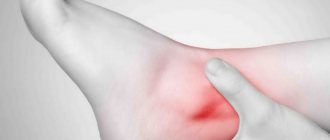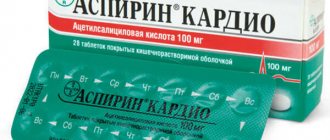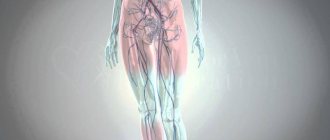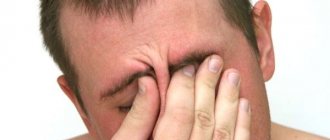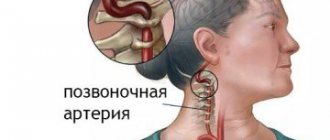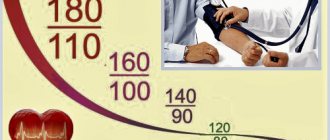Weakness with VSD is one of the most common signs, occurring in 95% of cases. This is precisely the basis for doctors to consider it one of the most striking symptoms for diagnosing the disease. How does it manifest itself? Is it possible to overcome it? How is dystonia diagnosed?
Vegetovascular dystonia (abbreviated VSD) makes itself felt not only by debilitating weakness. With this syndrome, almost all organs are affected: the heart aches, the head is dizzy, the heart is pounding or slows down. A person loses strength in a matter of hours, and with it the desire to think positively disappears, despondency sets in, which often leads people with dystonia syndrome to severe attacks of panic attacks, anxiety and even prolonged depression. Are you seeing these signs in yourself? It's worth getting tested.
With VSD, general weakness of the body is felt, stomach pain, headache, heart aches
Features of weakness in VSD
The physical and psychological nature of weakness is distinguished:
- The first occurs against the background of excessive physical exertion, when a person uses up all his energy reserves. The result of such activity is the inability of the muscles to work at an intense pace. At such moments, a person needs sound sleep and good nutrition. In the absence of pathological changes in the body, this is enough to normalize well-being and restore performance.
- Psychological weakness, which is typical for patients with VSD, has other features. A person exhausts himself with anxious thoughts, fears about the progression of the disease or the impossibility of curing it. In this case, the body loses energy not due to physical activity, but due to excessive worries. The desire to do anything disappears, followed by a deterioration in the patient’s condition, which further fuels his weakness. A “vicious circle” is formed.
Causes of dystonia
One of the most important reasons for the appearance of the syndrome is considered to be heredity. Simply put, a person is already born with a predisposition to the disease and, as soon as unfavorable provoking factors arise, it quickly worsens.
When can the syndrome make itself felt?
- In case of hormonal imbalance during pregnancy, menopause.
- About the reason for the surge of hormones in adolescence.
- Against the backdrop of severe stress due to the loss of a loved one.
- In case of disruption of the endocrine system.
- If you are very tired due to mental stress, for example after exams.
It is important to know! Women are at risk: after all, they more often experience hormonal shocks and worry even about little things. Also, VSD can “mow down” adolescents and people with excess body weight: excess weight is always an additional burden on a person, which means the cardiovascular system is overloaded.
The syndrome can make itself felt against the background of severe stress or excessive fatigue
Mechanism of weakness
Considering that the person suffering from dystonia is often to blame for the appearance of weakness, it is important to understand how the loss of energy resources occurs and how to cope with it.
The main source of energy that the body spends on performing physical and mental work is carbohydrates. During the process of glycolysis (decomposition), ATP molecules, lactic acid (lactate) and some other metabolic products are released.
- ATP is used as energy, and lactate and other substances are used to maintain homeostasis.
- Excess glucose that is not used is stored in the muscles and liver as glycogen. During physical activity, it is included in the metabolism and helps release energy.
There are several fundamental mechanisms that contribute to the occurrence of weakness in various forms of vegetative-vascular dystonia:
- lack of physical activity;
- malnutrition;
- anxious thoughts;
- disturbances in the functioning of the ANS, in this case causing the appearance of unpleasant symptoms of weakness, which is often combined with drowsiness.
The key factor remains the presence of physical activity, which activates energy metabolism. Of course, to replenish glucose reserves you need to eat well, but without sufficient work, muscles weaken. This leads to:
- fatigue;
- apathy;
- progression of classic symptoms of VSD.
During psychological “torment,” a person independently provokes the occurrence of pathological impulses in the cerebral cortex, which disrupts the functioning of the autonomic nervous system. This also aggravates the course of VSD.
By eliminating these factors, you will be able to improve your well-being and get rid of chronic weakness, fatigue and sleep disturbances. The main thing is to want to change your lifestyle. Remember: the mechanism of fatigue in dystonia is no different from normal, “biological” fatigue.
A little science in simple terms
Nature has endowed stress with special advantages: in order for a person to adequately withstand a fight with an enemy or urgently run away from impending danger, his entire body becomes toned as soon as the stress hormone - adrenaline - enters the blood.
The muscles are tense to withstand the upcoming test. The heart - and it is also a muscle - beats with all its might to supply the body and brain with oxygen in abundance. Athletes in training and people doing hard physical labor feel about the same way. The body works hard to help a person overcome difficulties. But this help cannot last forever - after all, a person is not a robot.
After a long period of muscle exhaustion, the body needs a certain period of rest and relaxation. And it doesn’t matter whether a person agrees with this or not. The muscles, having worked their due, relax and bask in rest, and their owner feels a significant loss of strength and a desire to lie down, sleep, and restore his resources.
Weakness in the legs
Severe muscle weakness in the legs is also on the list of common symptoms of VSD. Moreover, it is often experienced without objective reasons (physical overexertion, concomitant illnesses, etc.).
The main causes of muscle weakness in the legs due to dystonia, because of which doctors recommend spending more time on light physical activity:
- Excess lactic acid in muscles. During exercise and stress, glycogen (animal starch) breaks down in the muscles into glucose-6 phosphate, which is then converted into lactate, providing energy to the muscles themselves. Most of this energy goes to nourish the brain (up to 90%), which helps normalize well-being. But the accumulation of lactate in muscle tissue causes weakness and the familiar muscle pain after exercise.
- Disorder of the functioning of peripheral vessels. Against the background of VSD, the contraction and relaxation of veins and arteries is disrupted. This leads to blood stagnation with a feeling of heaviness and weakness in the legs.
- Disorder of the functioning of the ANS.
Weakness in the legs is only one of the signs of VSD, which can be treated with measured physical activity. The main thing is to choose the right individual set of exercises.
Situations are common when a patient with VSD comes to the therapist complaining of weakness in the legs. The doctor prescribes examinations, does not reveal any organic pathology and recommends doing light sports. Patients do not take such advice seriously and think that the doctor has not done enough diagnosis. They go to other doctors who advise the same thing. In the end, the person either realizes that the doctors are right, or begins self-medication. It’s easier for him to deny that he’s healthy, because feeling sorry for himself is so comfortable! This allows you to attribute all life’s failures to an imaginary illness and cultivate it.
VSD mode
But where does such strong weakness come from with VSD, since the person did absolutely nothing?
Before he had time to wake up and get out of bed, he already feels a strong desire to crawl back under the covers and... rest. To imagine how the body of a VSD student works, it is enough to stretch your hand forward and hold it there for several minutes. Whether you like it or not, your arm will get tired and will soon be forced to drop, no matter how much you resist. The hand was tired, but it didn’t do anything, right? In the same way, the VSD muscles did nothing, but they were constantly in a “suspended state” - just like your hand.
Patients with dystonia do not get out of a state of fear and nervous tension, so the tone of everything in their body is constantly predominant - skeletal muscles, fibers of internal organs, blood vessels. An ordinary person can feel a similar state if he drinks a few cups of strong coffee or a few cans of energy drink (just don’t need to do this, just imagine). For some time, the body will be “on edge” from such powerful CNS pathogens, but then it will naturally relax, and the person will feel a disgusting mood and a desire to lie on the sofa.
This is how a typical VSD person lives - from strong muscle tone to natural relaxation and back. Muscle weakness in VSD is especially pronounced after panic attacks and stress. The “brighter” the crisis was, the more energy was expended on it, and the longer the weakness will last.
Differential diagnosis
Despite the fact that weakness is a constant symptom of dystonia, differential diagnosis is still needed. The fact is that this symptom is nonspecific and accompanies a number of other diseases.
Before advising you to go in for sports, the doctor will conduct a full examination of the patient using additional examinations:
- careful collection of anamnesis and analysis of complaints;
- physical examination;
- clinical blood test;
- biochemical blood test (creatine phosphokinase level);
- muscle biopsy (if hereditary myopathies and amyotrophies are suspected);
- ECG;
- fluorography.
The diagnostic program is expanded if there is a suspicion of a specific disease causing weakness. It all depends on the individual characteristics of the person and genetic predisposition. In some cases, based on the family nature of the cases, it is possible to make a diagnosis of a rare hereditary pathology.
Signs and symptoms of depression
Symptoms of depression are usually easy to identify visually, even if a person hides his mental pain. Among the signs:
- Sad expression on the face, even the smile turns out to be sad, nervous;
- Constant disappointment with everything that happens in life;
- Decreased interest in hobbies and favorite activities;
- Constantly putting yourself down;
- Expectation of failure;
- Thoughts about suicide;
- Drowsiness or complete loss of healthy sleep;
- Poor coordination;
- Lack of appetite;
- Inability to concentrate on simple tasks;
- Headache;
- Ringing and noise in the ears;
- Lack of libido;
- Weight loss;
- Slow gait and movements;
- Frequent and long staring at one point;
And if depression visually scares others little, and they believe that a person is only trying to get someone’s attention, in fact, terrible things are happening inside the soul. Depression should not be confused with a bad mood, a nervous breakdown or quiet anger. Depressed people experience enormous internal stress associated with the fear of death. Their consciousness is changed, and current events are assessed from a different perspective. That is why one should not frivolously accuse depressed people of immaturity and stupid behavior. The more depression develops, the less adequately a person begins to perceive the words and actions of others. From painful indifference to life to a feeling of piercing hopelessness and worthlessness - one step.
However, the depression that accompanies VSD is usually not as strong as if it were an independent disorder. Therefore, a person with such depression is not prone to suicide or any very serious conditions.
Treatment recommendations
In the treatment of weakness caused by disturbances in the functioning of the ANS, drug and non-drug methods are used.
In the first case the following applies:
- specialized drugs aimed at improving metabolic processes in the brain;
- sedatives;
- drugs that stimulate the functioning of the autonomic nervous system (for the hypotonic type of VSD).
In non-drug therapy, the best results are demonstrated by the following methods:
- dosed physical activity;
- yoga;
- physiotherapy;
- correction of daily routine and diet;
- auto-trainings.
Integrated use of these treatment options improves well-being faster and eliminates weakness in the body.
Physical activity and yoga
The selection of highly targeted exercises is carried out after consultation with a doctor or professional trainer who knows how to work with dystonics.
- In the initial stages, normal walking will do. This helps harmonize the functioning of the ANS in hyper- and hypotonic types of the disease, which makes it universal. To normalize your well-being, it is recommended to walk 10-60 minutes a day.
- The equivalent of walking is swimming in a pool. This load involves all muscle groups in the body, fights psychological fatigue and improves mood.
- Yoga is a set of physical and psychological practices designed to harmonize the human condition. In case of VSD, performing asanas with breathing control and psychological training helps to quickly eliminate weakness.
In the initial stages, it is better to train under the supervision of a professional trainer.
How to calm down
Although the condition returns to normal within 15-80 minutes, sedatives are used to restore breathing - Glyciside, Anaprilin, Gidazepam. Alternative treatment includes:
- drinking water with sugar;
- relaxation in the shower.
A destructive condition, sweating removes the balance of carbon dioxide. To do this, inflate a bag or ball or breathe into a funnel from your palms. To tone the brain, read poetry by heart. A warm shower is helpful.
Pain throughout the body
One of the characteristic complaints of patients with VSD is a feeling of pain throughout the body. The reason lies in a serious dysfunction of the ANS with parallel developing psychological changes in the patient’s personality. Often, patients with vegetative-vascular dystonia are prone to hypochondria (exaggeration of true symptoms).
- Those irritating factors that are more often ignored by others can be perceived by the “VSD” person as a serious threat to health.
- It is not uncommon for a patient in an oncology clinic to complain less about discomfort than a person suffering from dystonia.
Pain is a subjective symptom that is difficult to classify. For diagnosis, special questionnaires are used, where the patient indicates the intensity of the symptom on a certain scale. However, it is not always possible to determine the real clinical picture of the disease from them.
A person’s feeling of pain throughout the body against the background of an already established diagnosis of VSD requires a careful approach to diagnosis and treatment. It is important not to miss organic pathology masquerading as autonomic dysfunction.
